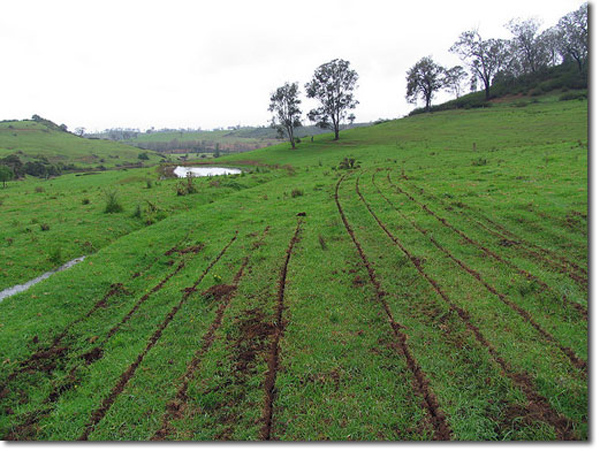
I’m experimenting with a passive compost trench system along the sides of our forest garden beds. The bean borders/compost trenches are primarily for erosion control, building soil, boosting the worm population and suppressing weeds. Secondary benefits include beans for seed and food, attracting pollinators, and benefiting nearby plants with extra nitrogen and water. The bean/vetiver/compost borders also look really good. In a few years the vetiver will grow into 12” clumps and form a continuous hedge, which will provide a continual source of nutrient rich green manure.
soil building
Restoring Degraded Land With Weeds
“When we started our farm, there were so many prickly “touch me nots” (impatiens or “shy plant)) that we were obliged to wear shoes at all times. Now, with the help of nutrient cycling, our garden has been transformed into a BAREFOOT GARDEN. Here’s how…”
Fast and Effective Soil Building Ideas
About a month ago I trimmed our mulberry trees to encourage new growth and extra fruit production. It seemed such a waste to throw the branches in the compost pile so I looked for a suitable place to plant 10” pieces of the branches to grow some new mulberry trees. I found two neglected parts of our garden where I could push the branches into the ground by hand. I was very surprised at how easily the mulberry sticks went into the ground with just hand pressure. This soil was compacted clay subsoil almost as hard as rammed earth two and a half years ago!!!! Now it’s turned into about 12” of topsoil.
Keyline Cultivation for Rapid Soil Building

Here’s an update about the keyline cultivation system that I covered in a previous blog post titled Restoring Degraded Land. Building soil on degraded land is one of my biggest passions lately, because this is what the world needs now. Scientists say it takes nature between 100 to 1,000 years to form an inch of topsoil, depending on local conditions. The keyline system can form 4″ of good topsoil in 3 years by chiseling grooves in the ground with a simple farm implement.
Permaculture Plants
Today’s blog post is reposted from Tropical Permaculture, an excellent site that I’ve been using lately. Sites like Tropical Permaculture and Eco Oasis that have specialized, expert level advice are invaluable. In a few hours of research you can glean important ideas that others learned over many years and use them to greatly improve your … Read more
Miracle Soil Building Properties of Vetiver Grass
This is almost too good to be true. Keep reading if you want to learn how vetiver is a true miracle plant. What do you do when you have hard pan clay soil like we do? We dug large tree holes for our fruit trees, but at some point the roots need to penetrate the surrounding clay soil in order for the tree to grow to maturity.
